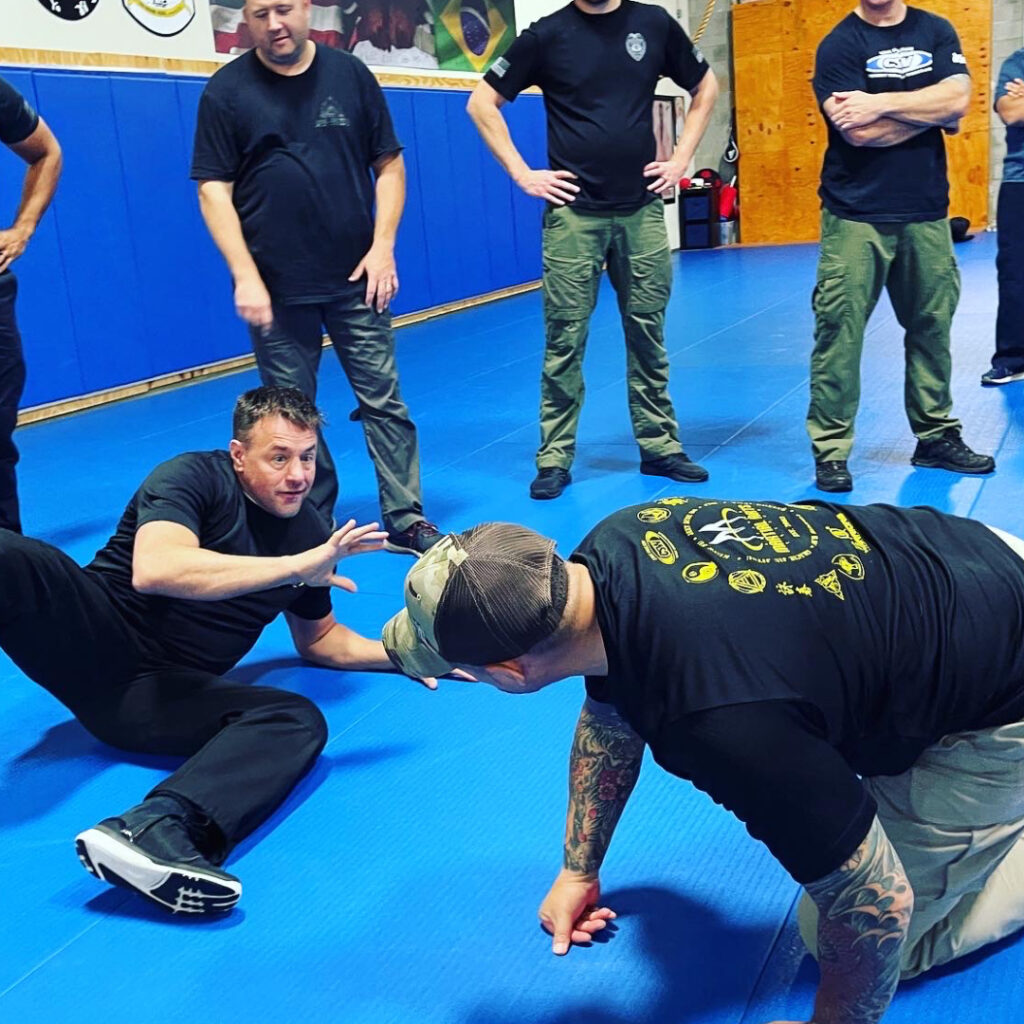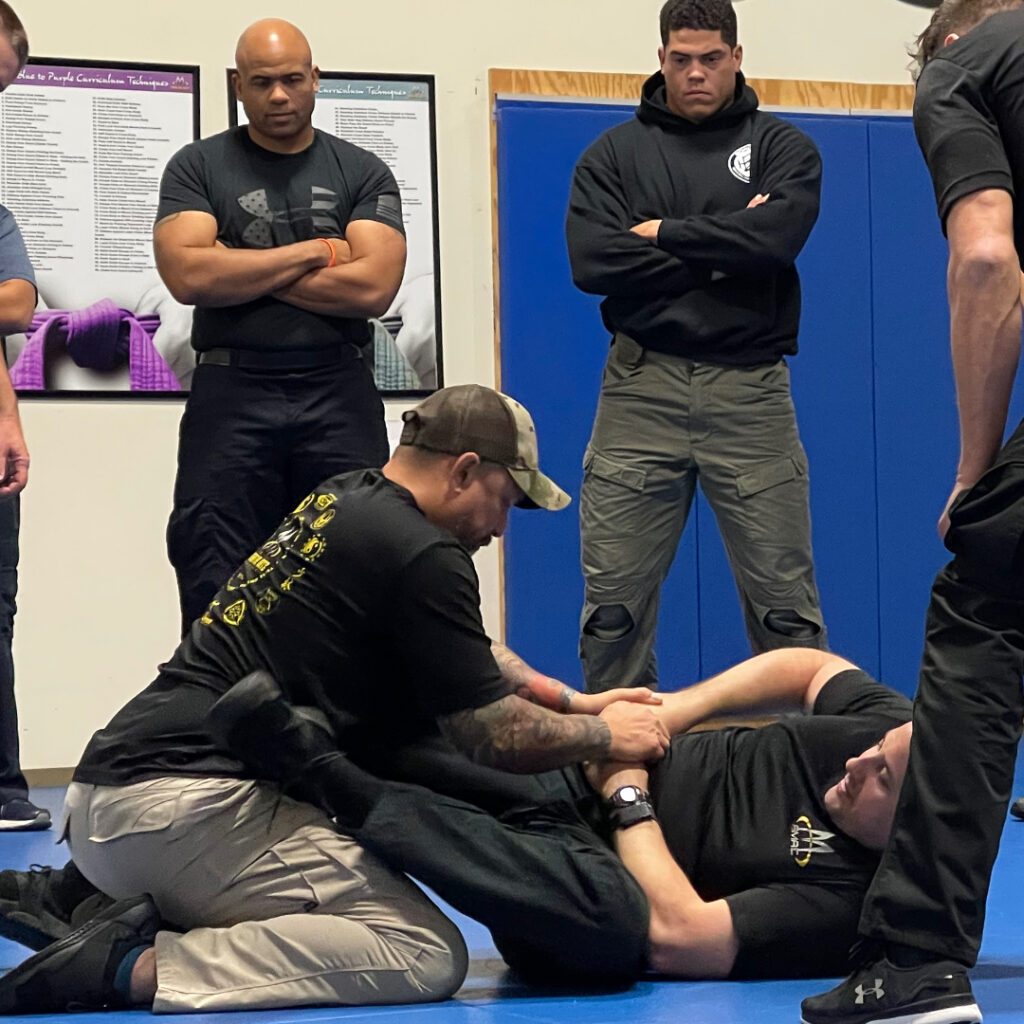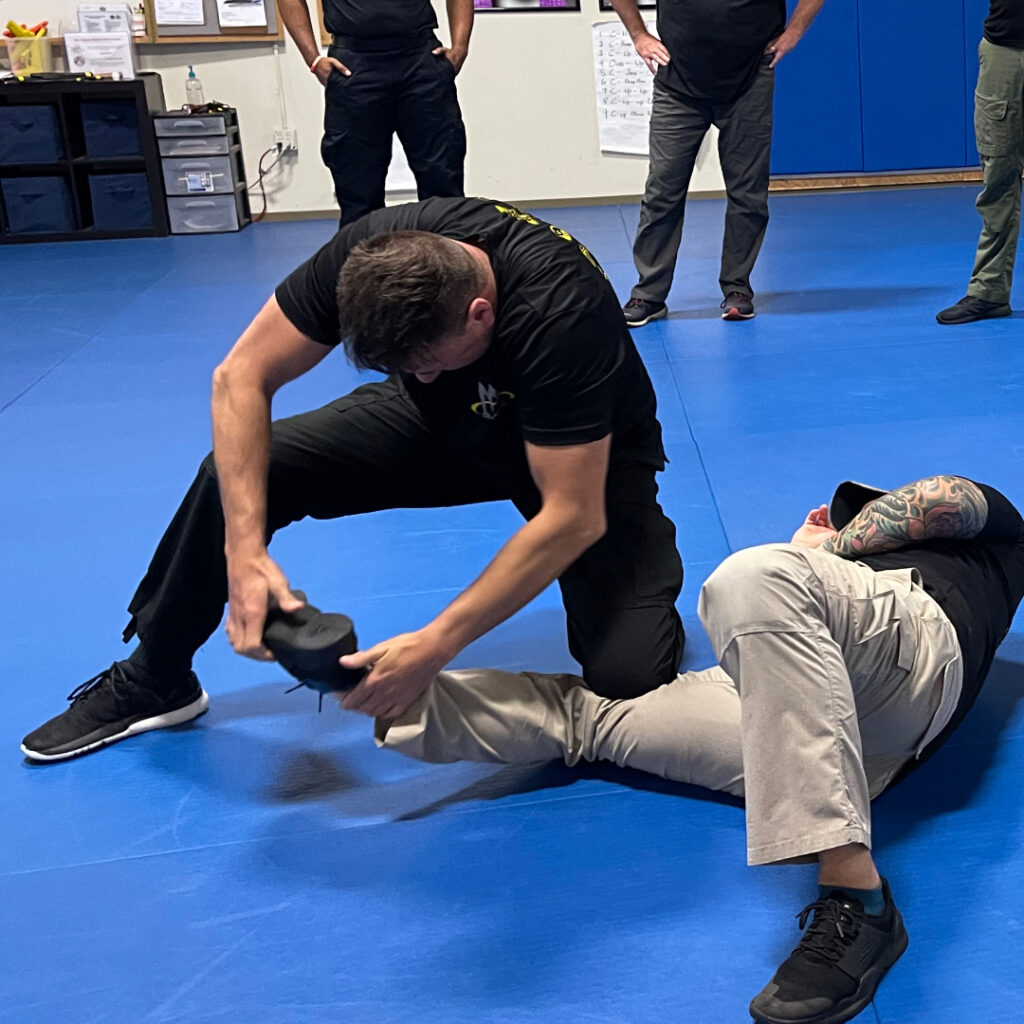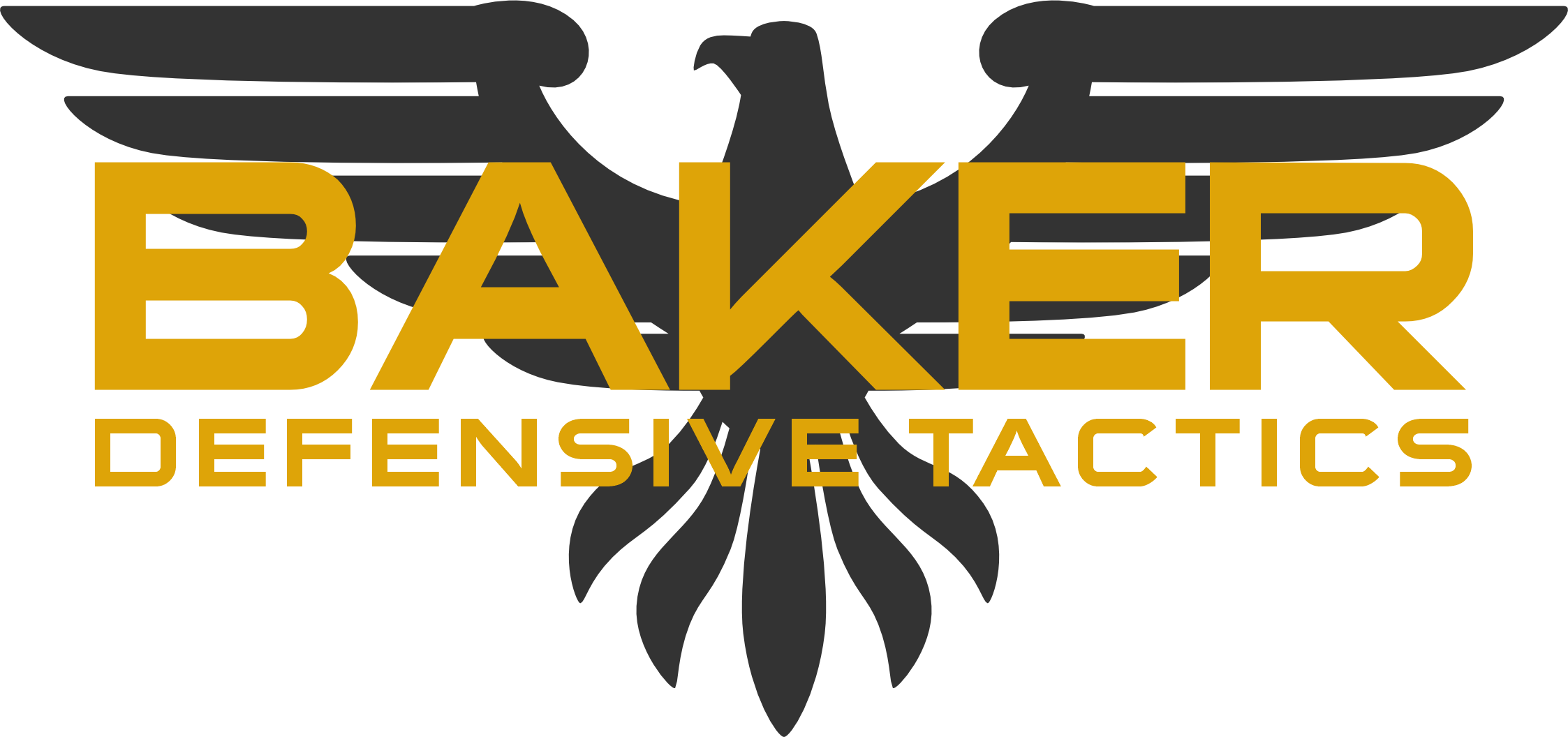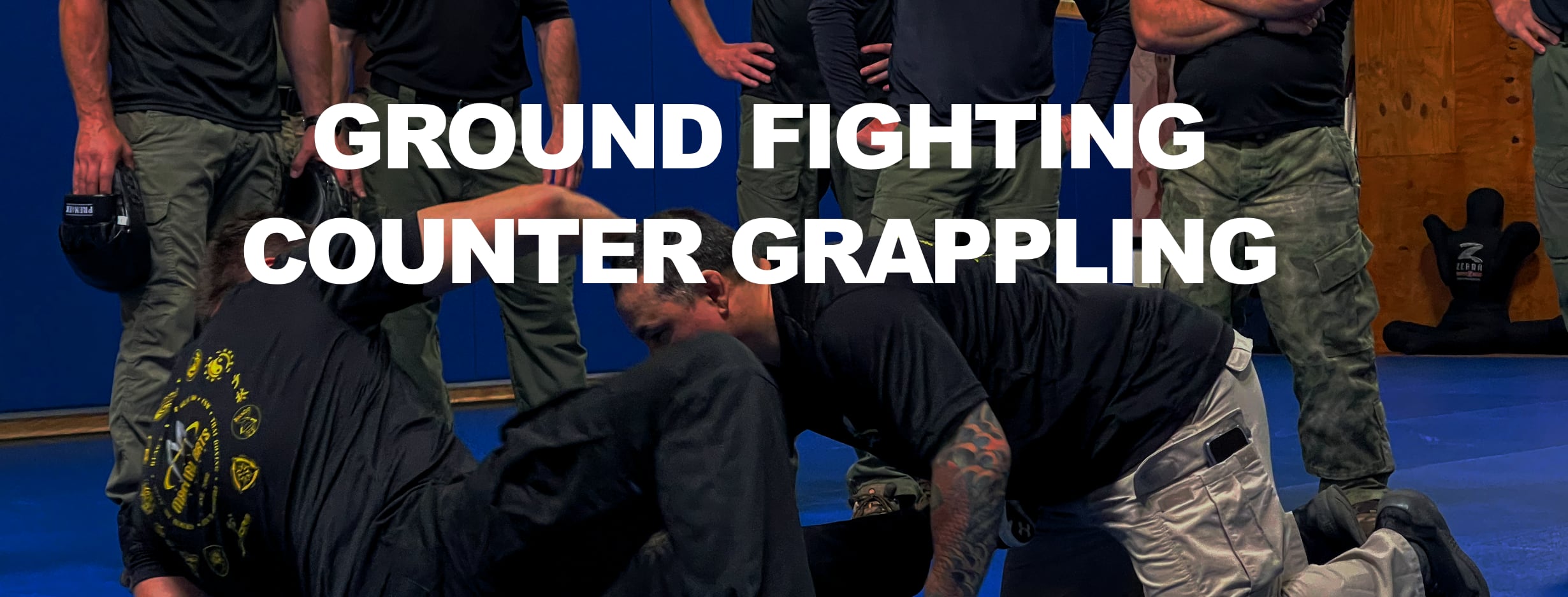Brazilian Jiu-Jitsu and Elms of grappling are extremely popular in the martial arts and defensive tactics industry. These systems offer a great base of information concerning grappling. But it is important to remember that grappling is not fighting. Grappling plays only a small portion of an actual fight. Suppose the scenario that grappling is being plugged into involves a law enforcement officer or a personal protection agent. In that case, it could be the last thing the agent or officer needs to be doing.
Also, if you are forced into a grappling situation, the mindset of “grappling to grapple“, which is what most of the systems teach, and ingrained in their students, would not be conducive to a positive outcome for the officer or the protection agent. This problem requires another answer that will be visually appropriate and socially acceptable and consider the goals of the person applying the methodology. We also assume that the same person may implement the information while armed with one or two different weapon systems. If this is the case, traditional grappling methods such as Brazilian Jiu-Jitsu Will not teach appropriate answers when considering these weapons.
This problem with traditional grappling methods is why we created the ground, fighting, and counter-grappling program. This program was specifically designed through a rigorous exploration of protection agents and law enforcement officers.
This program is taught in three different systems that work together:
The Ground-Fighting Program
The ground fighting program teaches how to deal with one or two opponents that are standing while you are on the ground and how to deal with a grappler when you are in a standing position and choose not to engage in grappling. The program also teaches striking methods from all ground positions in grappling, as well as how to strike two and standing opponents while on the ground.
The Counter Grappling Program
The Counter Grappling Program is a lady of grappling that helps the student discover the most common high percentage techniques taught in most of the little grappling systems that are taught today. With this information, the student learns how to use these standard techniques and movements against the grappler to end the fight quickly and decisively.
The Dog Boxing Program (Out of position fighting)
Dog Boxing I is a study of out-of-position fighting. Most martial arts systems teach students to stand and position themselves in specific ways to deliver the most destructive force. During agent, if the student is placed in a position and they are placed under significant stress, they will struggle to get back to the most comfortable position that they have trained to fight. This need to be in a trained position can work against a fighter if his opponent knows how to take him out of his element and put him in an unknown situation. An example would be someone thrown onto the hood of a car or table.
Another example is getting drug out of a car during a carjacking or being shoved against the wall. The Dog Boxing practitioner trains in multiple “out of position” scenarios. Due to this training, it is difficult to place someone who has studied Dog Boxing in an awkward position. They are also versed in the methods needed to produce great destructive force out of awkward positions and situations typically not studied in most martial arts.
